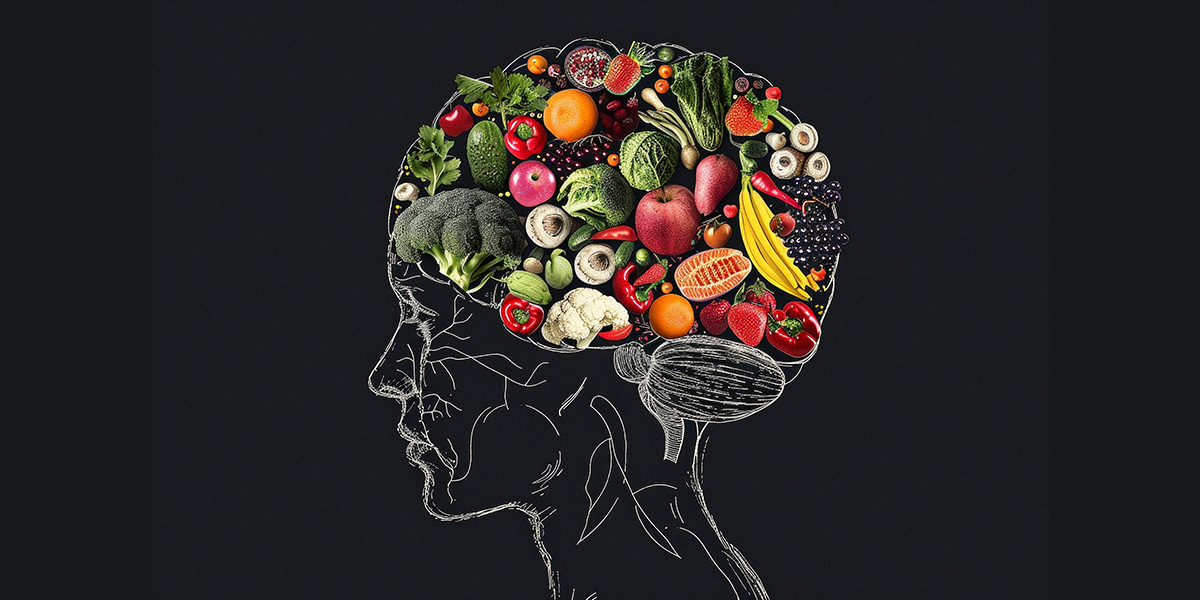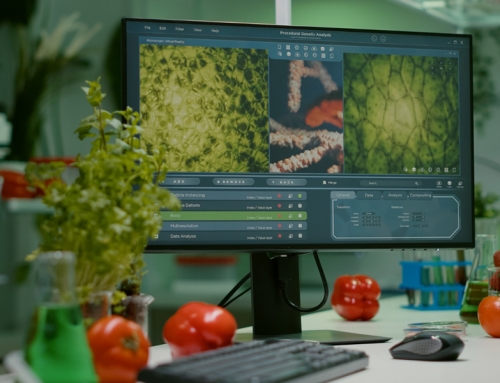The Intersection of Neuroscience and Nutrition Informatics: Understanding Food Cravings and Consumption Patterns
Introduction
The intersection of neuroscience and nutrition informatics represents a burgeoning field, offering profound insights into the intricate relationship between our brain and dietary behaviours. As lifestyle-related diseases like obesity and diabetes continue to rise, understanding the underlying neural mechanisms behind food cravings becomes imperative. This informative blog embarks on an exploration of the latest research at this interdisciplinary junction, shedding light on how our brain shapes our dietary choices amidst a backdrop of multifactorial influences. From the complexity of nutritional impacts on cognition to the emerging understanding of molecular mechanisms linking nutrition to brain function, this blog delves into the nuances of how our dietary intake influences cognitive processes, mental health, and overall well-being. Through unravelling these complexities, we aim to pave the way for personalised dietary interventions and foster a healthier future for individuals worldwide.(1)
Neural Mechanisms of Food Cravings
Recent studies have extensively explored the neural mechanisms underlying food cravings, employing techniques such as functional magnetic resonance imaging (fMRI) to identify key brain regions involved in craving regulation. The prefrontal cortex, insula, and striatum have emerged as pivotal players in modulating food cravings, with dopamine signalling in the mesolimbic pathway reinforcing food-seeking behaviours. While cravings represent conditioned responses to food cues, individuals actively work to regulate them, with research focusing on understanding how these neural responses predict health outcomes. Notably, the emphasis has primarily been on brain regions associated with reward processing, such as the ventral striatum and ventromedial prefrontal cortex. Despite the dominance of the mesolimbic dopamine system in research, other brain regions and cognitive processes like liking may also play significant roles in predicting food-related behaviours, suggesting a need for broader investigation in this field. (2)
Impact of Nutrient Composition on Brain Activity
The essential macronutrients – carbohydrates, fats, and proteins – play pivotal roles in sustaining optimal bodily functions, including cognitive processes. Through synthesising extensive research, we have delineated the impact of macronutrient intake from whole meals on cognitive function in healthy adults, elucidating underlying mechanisms. Notably, simple carbohydrates, or ‘sugars’, consistently exhibit adverse effects on global cognition, contrasting with the beneficial influence of complex carbohydrates on memory and brain ageing. Saturated fatty acids detrimentally affect memory and learning, while omega-3 intake correlates positively with memory scores. Protein intake enhances executive function and working memory under high task-demands. Age, physical activity, and glucose metabolism modulate individual responses to macronutrients. Neural correlates, such as cortical thickness and cerebral amyloid burden, illuminate the intricate relationship between dietary components and cognitive function. Key mechanisms involving glucose and insulin metabolism, neurotransmitter actions, and cerebral inflammation underscore the profound impact of macronutrient intake on brain health. Consequently, fostering a balanced diet is pivotal in preserving cognitive integrity and functionality, whereas inadequate nutrition poses risks to cognitive health. Thus, understanding the interplay between diet and cognition holds promise for refining nutritional guidelines and promoting mental well-being and healthy brain ageing. (3)
Role of Gut Microbiota in Food Cravings
The gastrointestinal microbiota plays a crucial role in regulating host eating behavior, potentially influencing food preferences and cravings to enhance their own fitness. This can occur through mechanisms such as generating cravings for specific foods or inducing dysphoria until certain foods are consumed. Various pathways are implicated, including microbial effects on reward and satiety pathways, toxin production altering mood, receptor changes, and manipulation of the gut-brain axis via the vagus nerve. Manipulating the microbiota through interventions like prebiotics, probiotics, or dietary changes offers a promising approach to addressing obesity and unhealthy eating habits. Despite the intricate regulation of eating behaviour by both central and peripheral signals, dysregulation can lead to addictive eating patterns, often associated with gut dysbiosis. Understanding the role of the gut microbiome in such maladaptive behaviours, like “food addiction,” is crucial for developing effective interventions and treatments. (4,5)
Implications for Dietary Interventions
In the realm of cognitive interventions, studies have revealed heightened attentional biases towards food among various demographics, including individuals with disordered eating patterns and those who are overweight or obese. While attempts to manipulate attentional biases to reduce food consumption have shown mixed results, recent findings indicate potential for modification. However, challenges persist, as demonstrated by modest effects on attentional bias and food consumption observed in certain studies. (6)
Neuromodulation interventions, particularly through techniques like transcranial magnetic stimulation (TMS), have emerged as promising avenues for reducing cravings and addictive behaviours by altering neural activity. Applied to brain regions involved in inhibitory control, such interventions have shown efficacy in reducing cravings for substances like cigarettes, alcohol, and drugs of abuse. (6)
Therapeutic interventions such as Overeaters Anonymous and cognitive behavioural therapy (CBT) offer holistic approaches to addressing obesity. While Overeaters Anonymous emphasises surrendering to a higher power and fostering community support, CBT focuses on identifying and modifying maladaptive thoughts and behaviours. Both approaches show potential in treating overeating and binge eating disorder, albeit with different emphases on dietary restraint and behavioural modification.(6)
Conclusion
In conclusion, the synergy between neuroscience and nutrition informatics provides invaluable insights into the intricate relationship between our brain and dietary behaviors. By elucidating the neural mechanisms driving food cravings and consumption patterns, researchers are better equipped to devise targeted interventions for promoting healthier eating habits. From understanding the impact of macronutrient composition on cognitive function to exploring the role of gut microbiota in regulating eating behaviour, this interdisciplinary approach holds immense promise for addressing the global challenge of diet-related diseases. By leveraging this knowledge, we can pave the way for personalised dietary interventions and foster a healthier future for individuals worldwide.
References
- Dauncey, M. J. (2009). New insights into nutrition and cognitive neuroscience: Symposium on ‘Early nutrition and later disease: current concepts, research and implications.’ Proceedings of the Nutrition Society, 68(4), 408–415. doi:10.1017/S0029665109990188
- Giuliani, N. R., Cosme, D., Merchant, J. S., Dirks, B., & Berkman, E. T. (2020). Brain Activity Associated With Regulating Food Cravings Predicts Changes in Self-Reported Food Craving and Consumption Over Time. Frontiers in human neuroscience, 14, 577669. //doi.org/10.3389/fnhum.2020.577669
- Anne-Katrin Muth, Soyoung Q. Park, The impact of dietary macronutrient intake on cognitive function and the brain, Clinical Nutrition. Volume 40, Issue 6, 2021, Pages 3999-4010, ISSN 0261-5614, //doi.org/10.1016/j.clnu.2021.04.043.
- Alcock, J., Maley, C. C., & Aktipis, C. A. (2014). Is eating behavior manipulated by the gastrointestinal microbiota? Evolutionary pressures and potential mechanisms. BioEssays : news and reviews in molecular, cellular and developmental biology, 36(10), 940–949. //doi.org/10.1002/bies.201400071
- Novelle M. G. (2021). Decoding the Role of Gut-Microbiome in the Food Addiction Paradigm. International journal of environmental research and public health, 18(13), 6825. //doi.org/10.3390/ijerph18136825
- Adams, R. C., Sedgmond, J., Maizey, L., Chambers, C. D., & Lawrence, N. S. (2019). Food Addiction: Implications for the Diagnosis and Treatment of Overeating. Nutrients, 11(9), 2086. //doi.org/10.3390/nu11092086






Leave A Comment